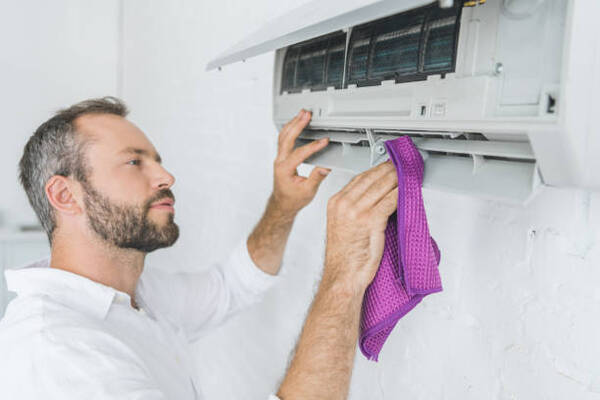- 1-905-452-8193
- Contact Us
- Member Login
- Get Listed Today
- 220,911 members

According to experts in air conditioning Central Coast, mould is a type of fungus that can grow both indoors and outdoors. Its spores are invisible to the naked eye and can enter your home through open doors, windows, vents, and cooling units. Mould loves damp, humid environments and can often be found in basements, crawl spaces, attics, and bathrooms. Air conditioners are a prime breeding ground for mould because they are constantly recirculating warm, humid air. If you have an air conditioner that is not properly maintained, it can become a haven for mould spores.
Mould growth in your home can cause a variety of health problems including respiratory problems, headaches, allergic reactions, and skin irritation. If you suspect that you have mould growing in your air conditioner, it is important to have it professionally cleaned and remediated as soon as possible. In the meantime, you can do a few things to prevent mould growth in your air conditioner.
There are a few different ways that mould can get into your air conditioner. One way is through leaks in the system. Another way is if you live in an area with high humidity, such as near a body of water. Mould can also grow on damp clothes or towels that are left in the air conditioner.
If you have a mould problem in your home, it is important to take action immediately to remediate it. By taking action quickly, you can get rid of the mould and prevent it from coming back. Use the following tips to effectively take the mould out of your cooling appliance.
Keep your air conditioner clean.
The first step in preventing mould is to keep your air conditioner clean. Wipe down the unit regularly with a damp cloth to remove any dirt or debris that could be providing a food source for mould.
Change your air filter regularly.
Your air conditioner's air filter traps mould spores and other airborne contaminants. If it becomes clogged, those spores can be released back into your home. To prevent this, change your air filter every three months or so.
Inspect your air conditioner for leaks.
Leaks in your air conditioner can provide moisture that mould needs to grow. Inspect the unit regularly for any leaks and have them repaired as soon as possible.
Use a dehumidifier.
Keeping the humidity levels in your home low will make it less hospitable for mould. A dehumidifier can help to keep the air dry and prevent mould from growing.
Run your air conditioner regularly.
If you live in an area with high humidity, running your air conditioner regularly can help to prevent mould growth. The drier air will make it harder for mould to grow.
Clean your ducts and vents.
Your air conditioner's ducts and vents can become a breeding ground for mould if they're not cleaned regularly. Vacuum them out every few months to remove any dust or debris that could be providing a food source for mould.
Use an anti-mould spray.
There are several commercial anti-mould sprays available that can be used to prevent mould growth. These sprays work by creating a barrier that mould cannot penetrate.
Treat mould with bleach.
If you already have a mould problem, treating it with bleach can help to kill the mould and prevent it from spreading. However, bleach is also harmful to your health, so be sure to use it in a well-ventilated area and wear gloves and a mask when using it.
Remove damp items from your home.
Mould loves moisture, so removing wet items from your home can help to prevent its growth. If you have any items that are damp, such as towels or clothing, wash them ASAP and dry them completely before storing them again.
Fix any leaks in your home.
If you have any leaks in your home, fix them as soon as possible. Leaks provide the moisture that mould needs to grow, so getting rid of them can help to prevent its growth.
If you think you may have a mould problem in your home, the first step is to contact a professional mould remediation company. They will be able to assess the situation and recommend the best course of action. In most cases, they will recommend a course of treatment that includes removing the mould and taking steps to prevent it from coming back.
